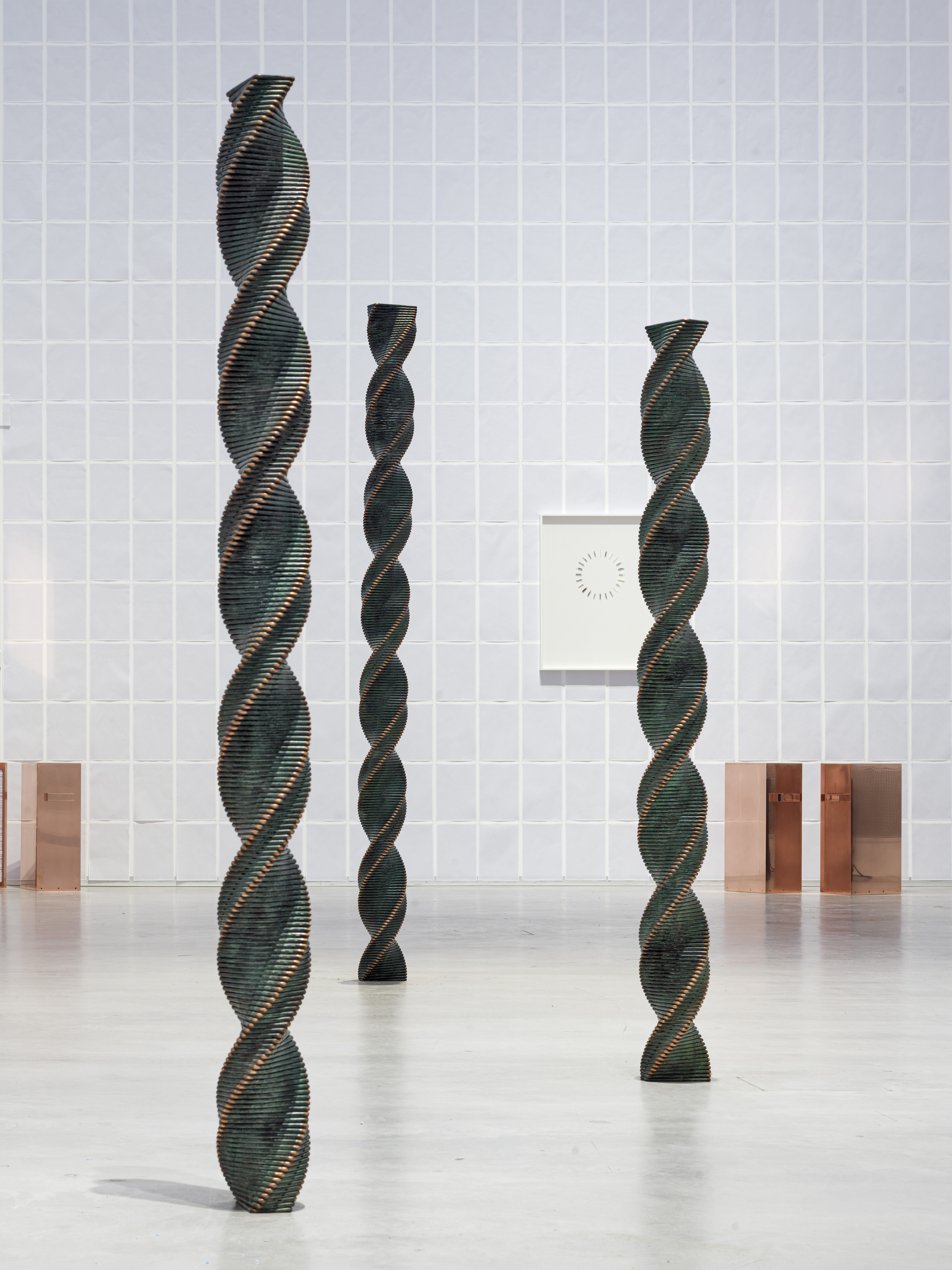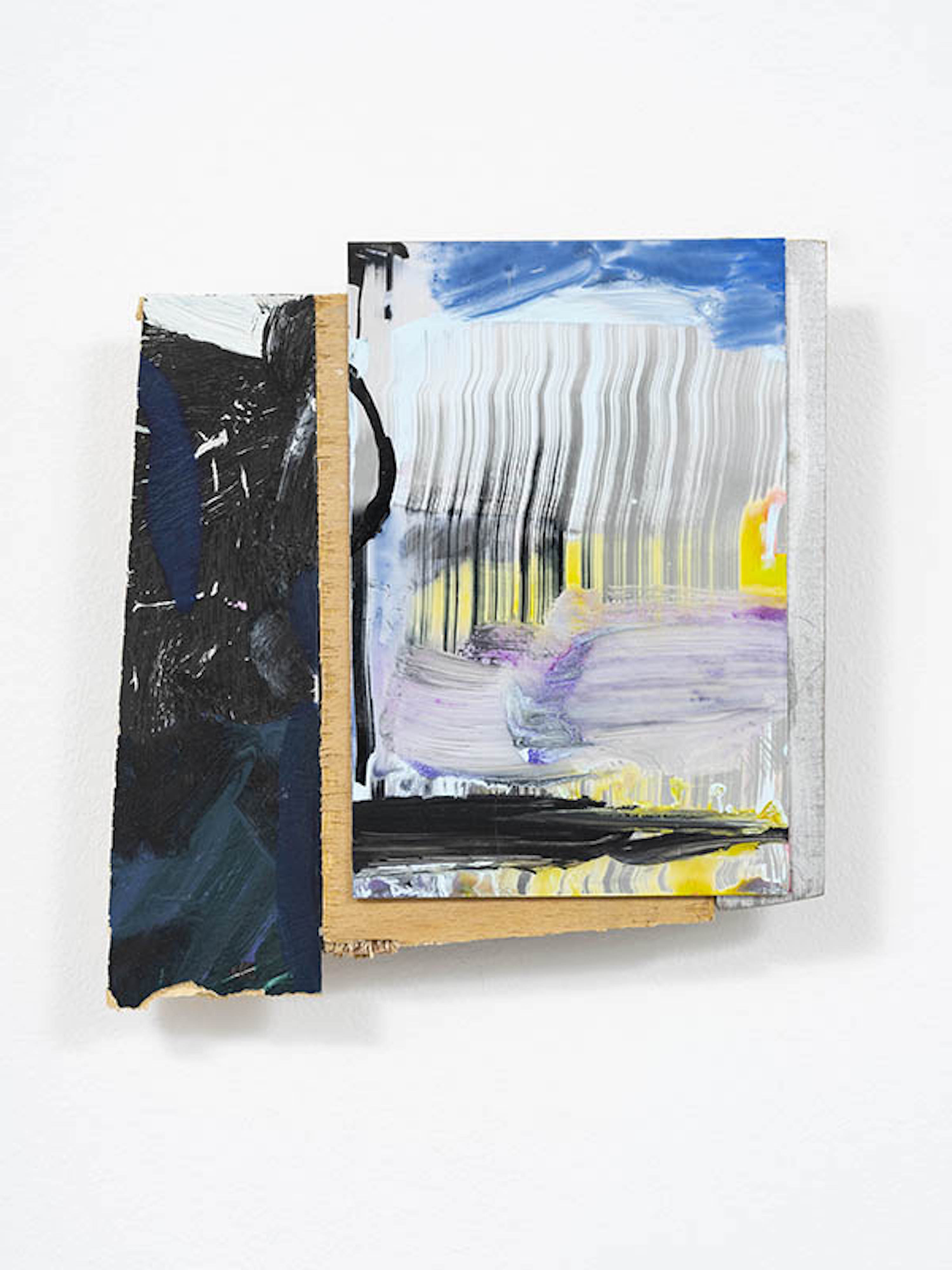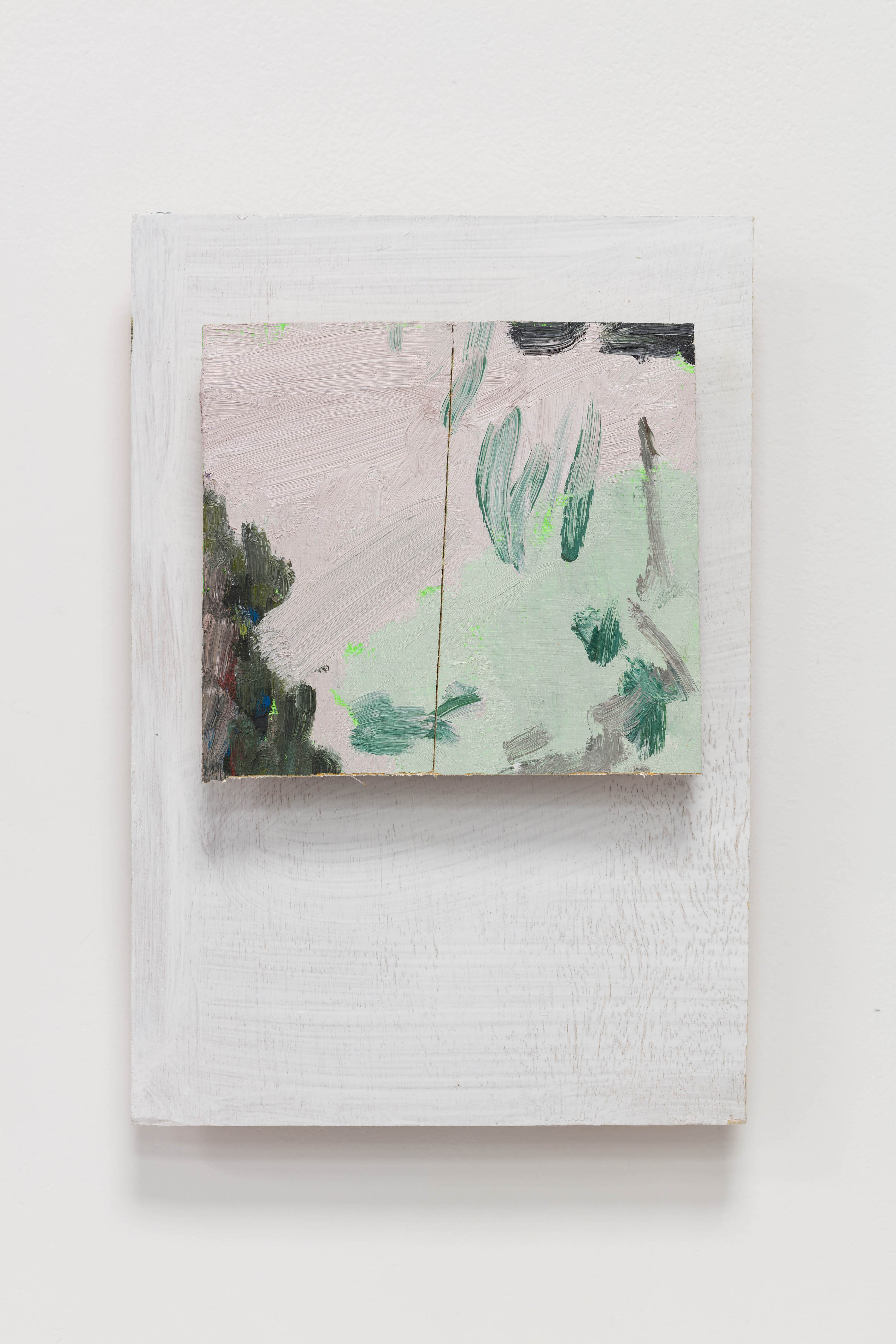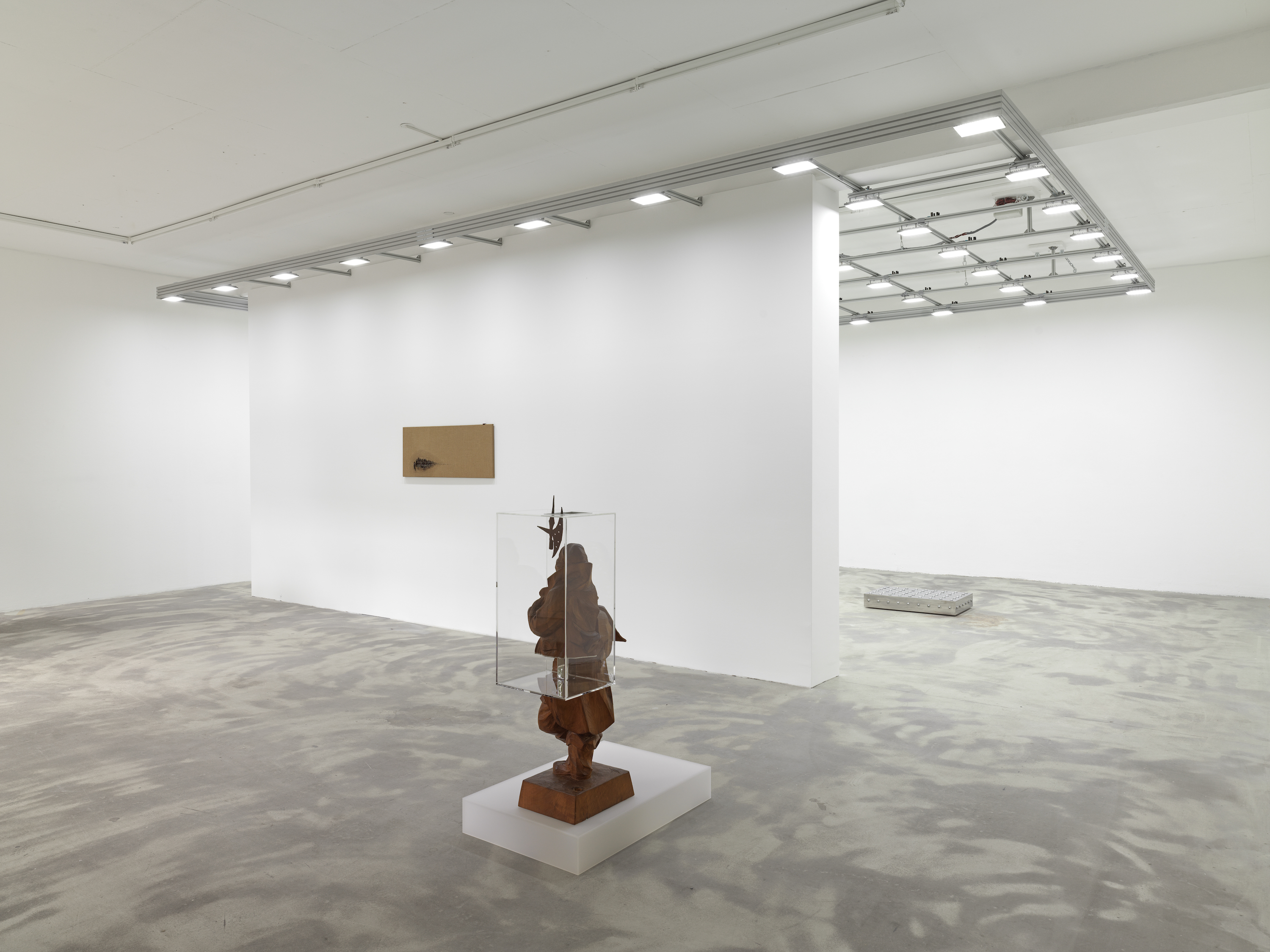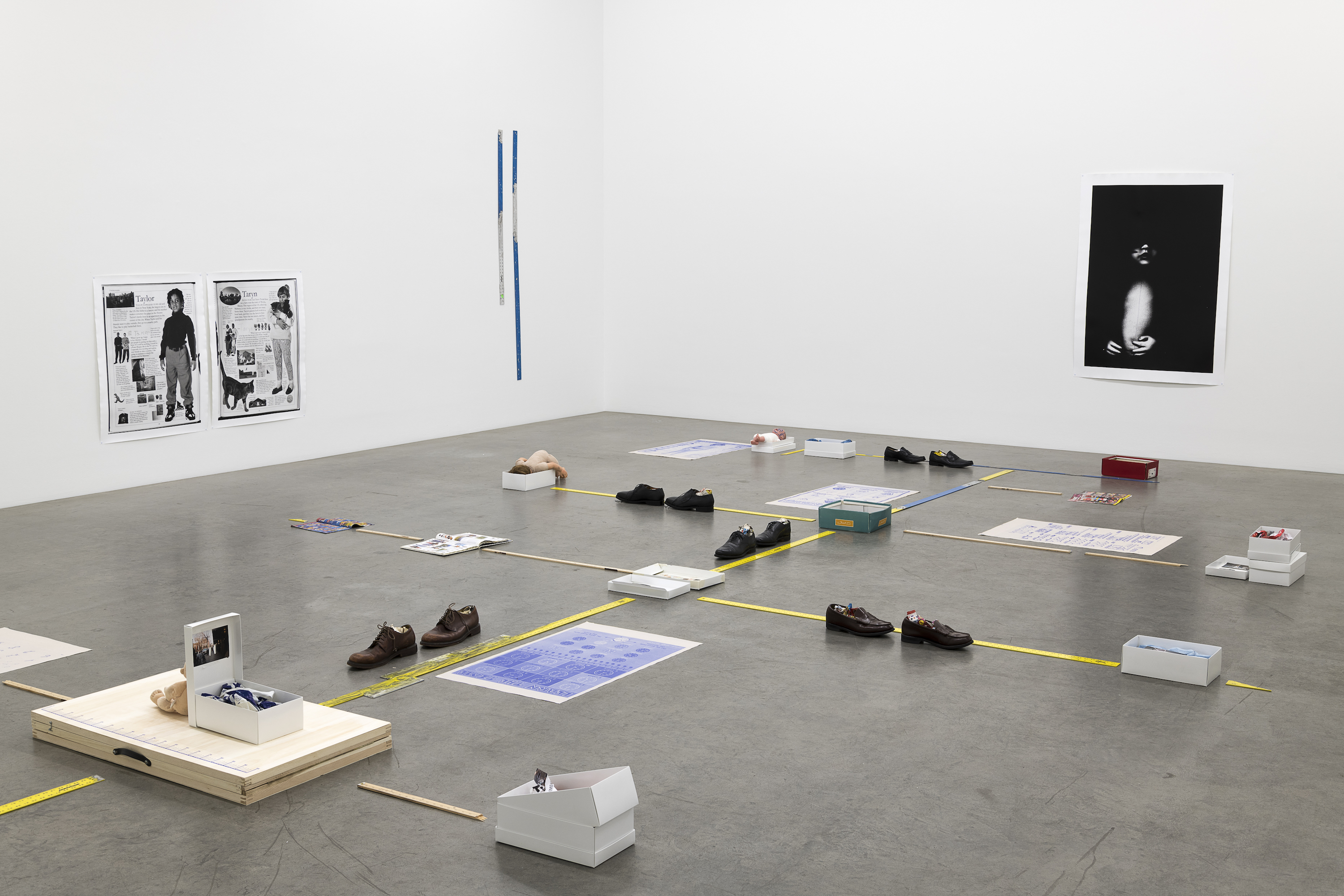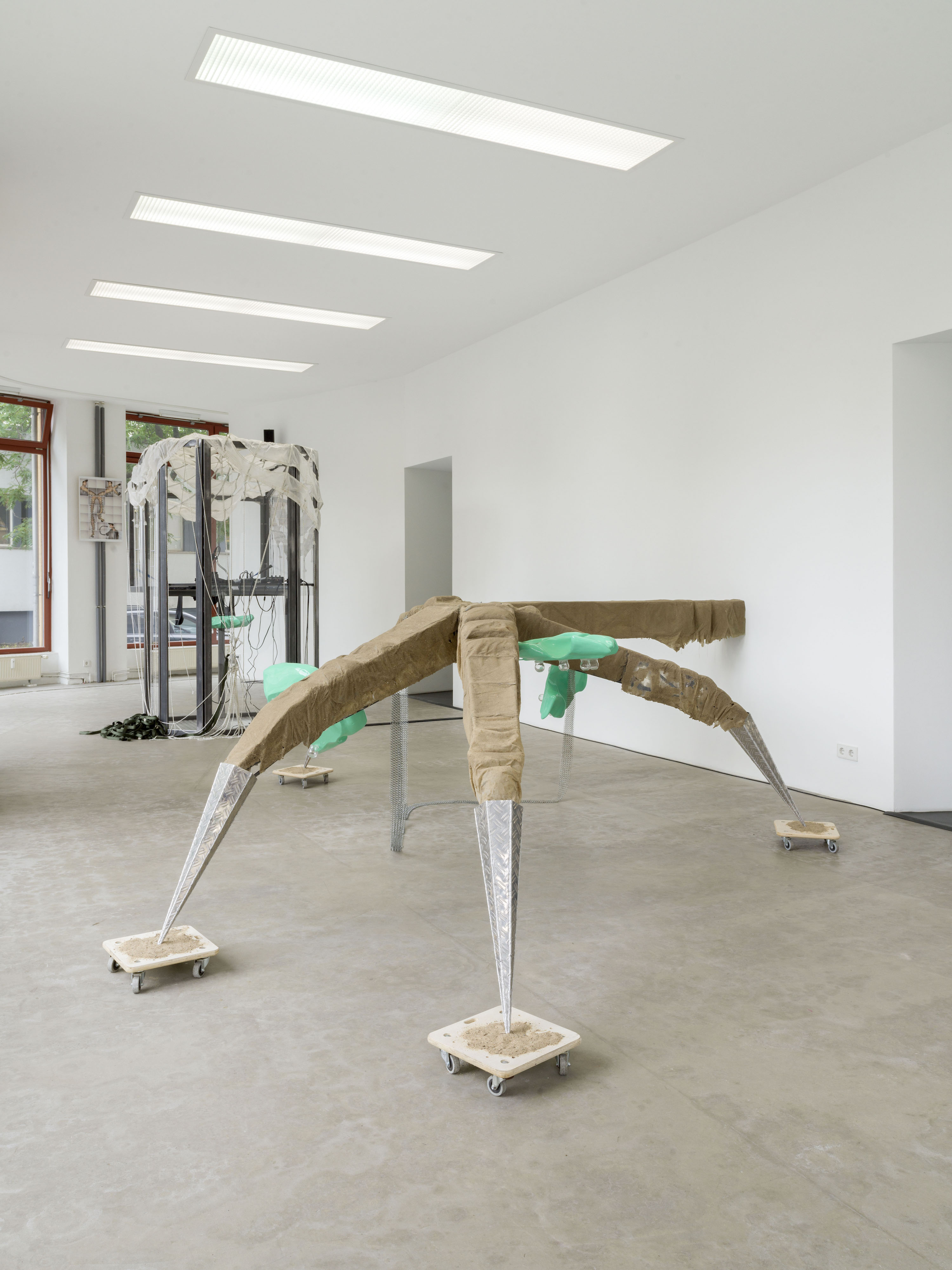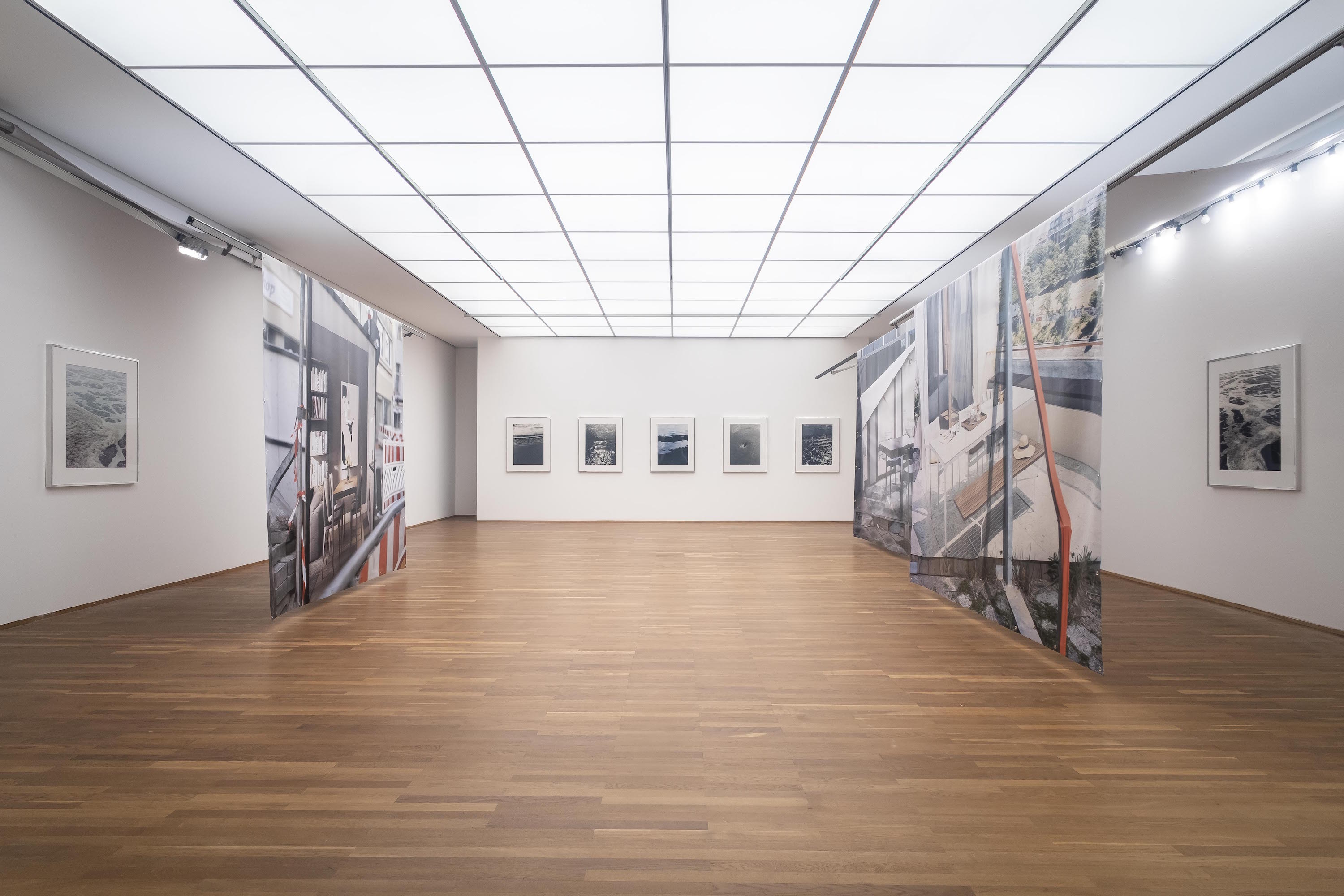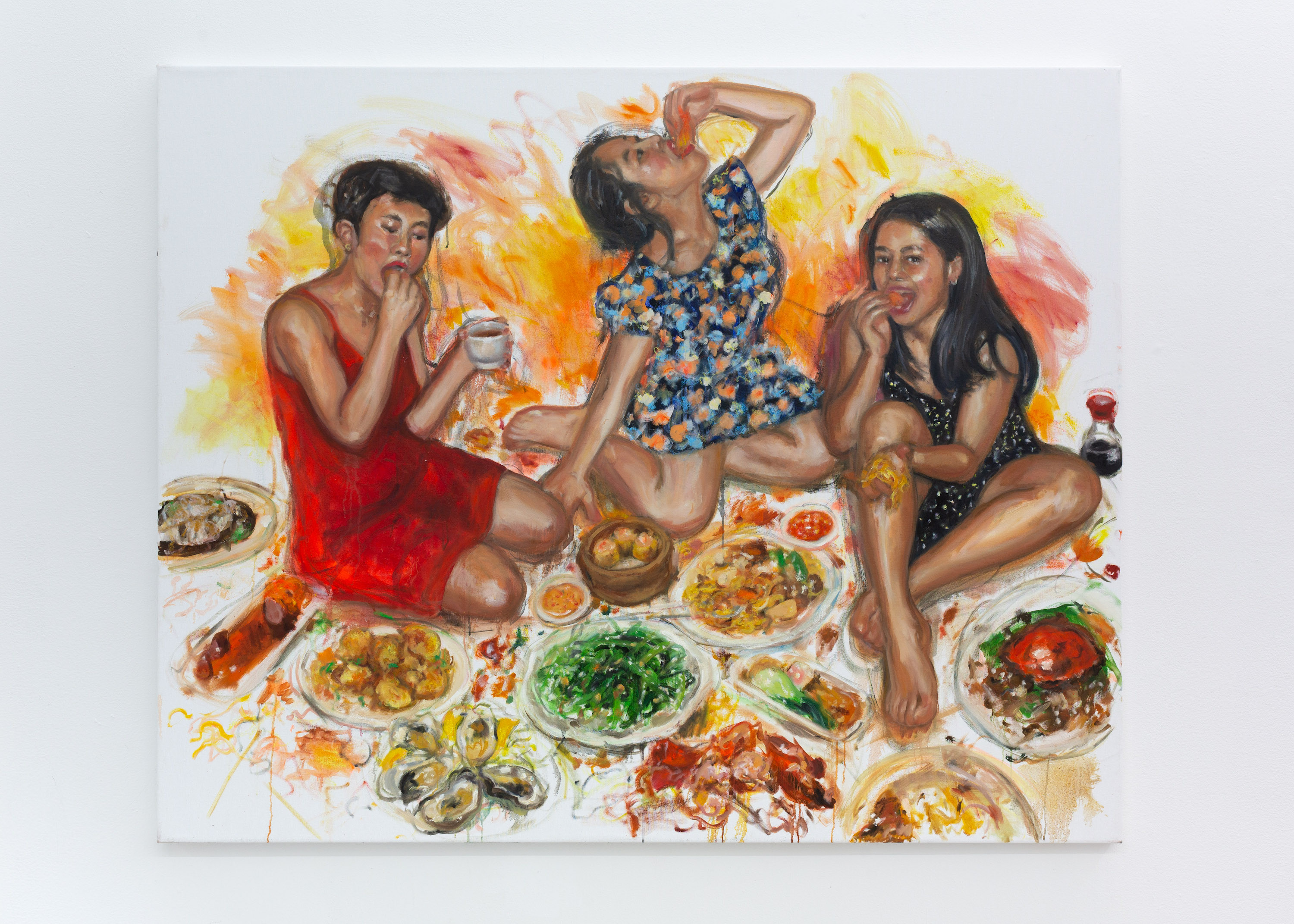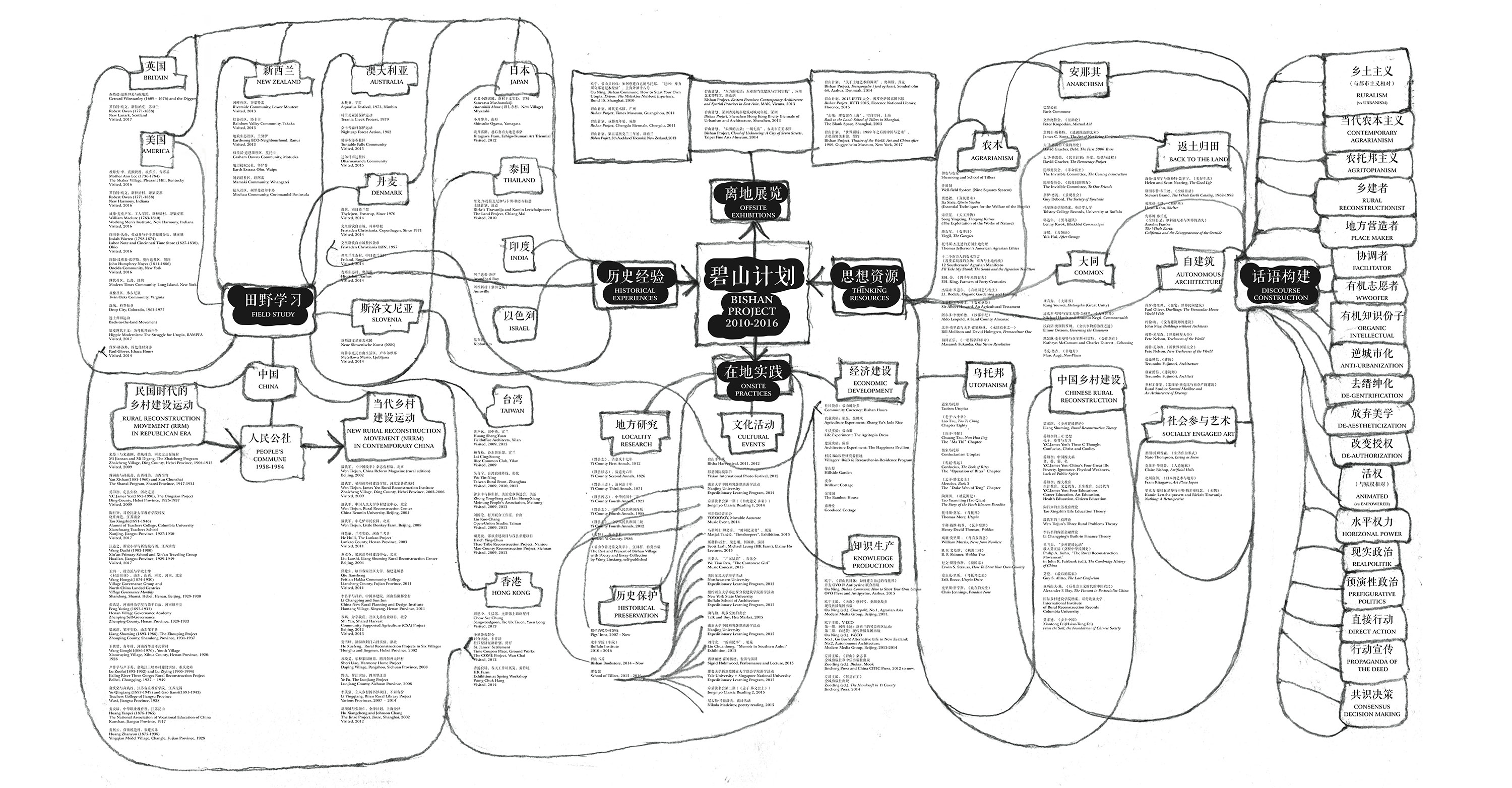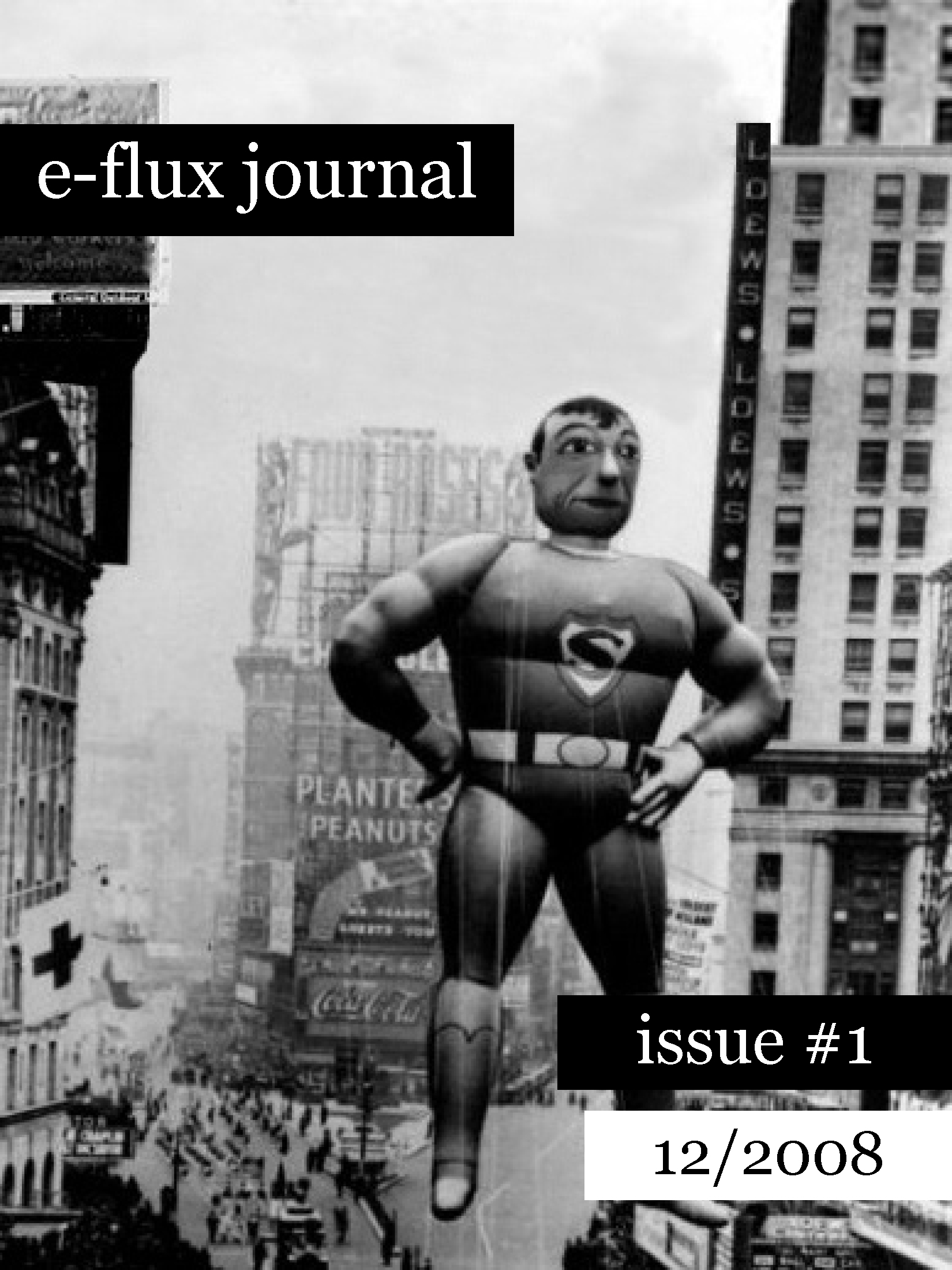Since the beginning of last year many artists have turned inward—or at least towards their immediate surroundings. Last week, during Berlin Art Week and Gallery Weekend Berlin’s Discoveries edition, over 70 exhibitions (some long-delayed) opened in the city’s galleries, institutions, project spaces, and private collections, featuring both established and emerging artists. The themes addressed are wide-ranging, but one recurring motif is an introspection expressed in portraiture: not necessarily in the figurative sense, but in using the framework of an exhibition to present a close study of one’s own identity, of a place, of an environment.
Reflecting this idea most overtly is Alicja Kwade’s exhibition “In Abwesenheit (In Absence)” at Berlinische Galerie. Here, the artist moves away from her usual cosmic explorations of time in favor of a show that is most clearly read as a self-portrait. 314,000 sheets of pale purple paper are printed with her fully sequenced DNA, with the 0.1% of letters that differentiate her from others bolded. Many sheets line the room’s towering walls, while thousands more are encased in bronze archival boxes. Twenty-four speakers are arranged on a giant black steel ring suspended from the ceiling, projecting Kwade’s heartbeat as it rises and falls. Bronze molds of her iPhone are stacked, swirled, and welded together into human-size double helixes. Nine shadowbox frames house 24 glass ampoules filled with the chemical elements that compose the human body. Despite the artist’s physical absence, the (scientific) essence of her being is laid out for examination and contemplation: What is left when a person is reduced to their data, and can such information be considered a “likeness”? Though Kwade’s work raises such questions, she leaves the answers ambiguous.
“Rekommandeur,” Mara Wohnhaas’s debut with BQ—the young German artist’s first ever solo exhibition—also looks inwards, albeit with a very different approach. Elements of the artist’s biography (her parents owned an antique shop; rusting pieces of armor feature in sculptures) and photographic, digitally collaged self-portraits meld with a fantastical projection of her own imagination. The gallery’s largest room features two large, mechanical-looking sculptures, one of which acts as a control box in which Wohnhaas delivered a daily spoken-word performance. At all other times, recorded readings echo throughout the space, her voice mutated through funfair-esque sound effects. In this way, Wohnhaas takes on the role of the Rekommandeur (“barker” in English; the person outside a circus or carnival who attempts to attract visitors), formulating and controlling the projection of self within her own fantasy world, encouraging the audience to join the ride.
At Galerie Neu, New York–based artist Win McCarthy presents a kind of self-portrait through his own abstract language. In “RULER,” actual rulers are welded together and placed alongside objects including cut-up photographs in shoeboxes, an ad for “American Week” at the German discount supermarket Penny, a plastic baby doll head sticking out from a Brooks Brothers suit jacket, and enlarged scans from what seems to be an encyclopedia filled with one-page descriptions of children living around the world (the featured pages are from the “United States” section, giving overviews of the lives of Taylor Mapps, a six-year-old from New York City, and Taryn Tesdal, a seven-year-old from a farm near Morris, IL). McCarthy seems to be setting the stage for his own encyclopedic entry, inviting viewers to literally size him—and in turn, if you’re an American in Berlin, also yourself—up.
Meanwhile, Tomás Saraceno’s show “we do not all breathe the same air” at neugerriemschneider takes its name from an ongoing series of works that can be described as portraits of the air in cities. In a darkened room, four frames are illuminated, each enclosing seven horizontally cut strips of paper. Each strip presents 24 circular shadings of what at first might appear to be phases of the moon, but are, in fact, the results of air filtration tests: a kind of vacuum is attached to the paper, and each circle represents the pollution filtered from the air over the course of an hour. Together, the seven strips in one frame demonstrate the shift in air quality in one place over one week. The works in this show signify neighborhoods in Paris, but the series is also currently being expanded into a portrait of environmental racism across the United States.
In “Heads” at Galerie Barbara Weiss, Andreas Siekmann presents 47 miniature busts to map a historical overview of capitalism through its supposed masterminds, ranging from eighteenth-century mercantilists to Jeff Bezos and Mark Zuckerberg. At Klemm’s, Jonas Roßmeißl crafts a stage of contemporary surveillance and alludes to the causalities it creates. Physical works feature gearmotors-as-shredders, but a hidden jammer also disables cellular service within the gallery and the lights are in fact a new technology patented by the artist; the lighting may seem normal enough, but when you go to take a photo, patterns flash across the screen. Beyond these shadowy flickers, the lights imprint patterns within the pixels themselves, allowing Roßmeißl to trace every photo taken within the exhibition that is uploaded online. For their presentation as nominees for the Preis der Nationalgalerie 2021 at Hamburger Bahnhof, duo Calla Henkel and Max Pitegoff critically address the issue of Berlin’s rapid urban development. Their portrait of the city includes, among other things, photographs they took of advertisements at real estate projects in Berlin (the renderings proposing luxurious, utopian ideals of city living) which they then embedded within real street scenes—dirt, graffiti, trash, and all. The resulting images are printed on PVC banners and hung from awnings the artists collected from recently closed bars and restaurants.
But not everything is so dense. Simpler gestures also act as homages to people and places missed during lockdowns: Mary Ramsden’s first exhibition at Wentrup, for example, features 12 small, beautiful abstract wood-based paintings and assemblages, each of which represents a friend she was unable to see during the pandemic. Looking at things close at hand—or heart—can produce work full of intimate, unexpected energy.
